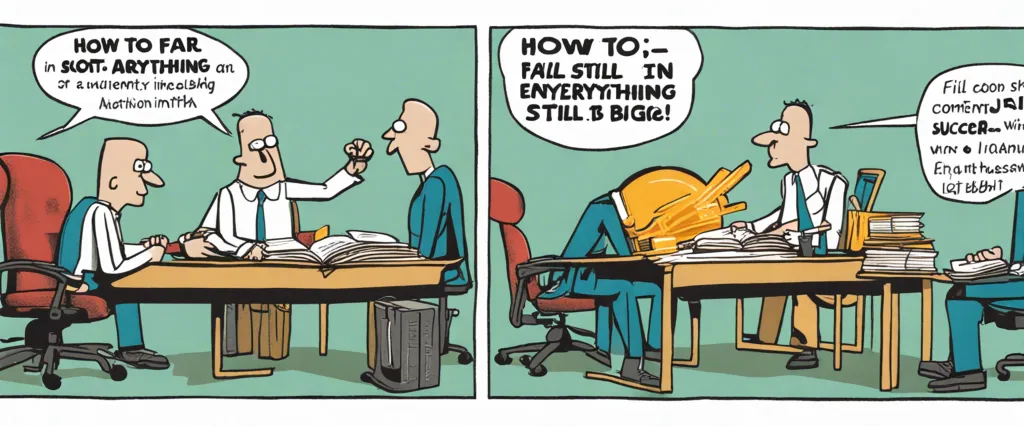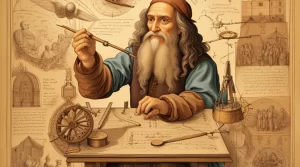——How to Fail at Almost Everything and Still Win Big by Scott Adams & Think And Grow Rich by Napoleon Hill

In the realm of self-help literature, numerous books assert the key to achieving ultimate success and personal growth. It is within this niche that we find two remarkably influential works: “How to Fail at Almost Everything and Still Win Big” by Scott Adams and “Think And Grow Rich” by Napoleon Hill. Both texts offer invaluable insights into the art of accomplishing one’s goals, with the authors drawing on their personal experiences and the wisdom garnered from countless successful individuals.
As readers embark on a tireless pursuit of success, it is essential to evaluate and compare these two influential books to identify the distinctive philosophies, strategies, and perspectives they bring to the table. By examining the central themes, authorial approaches, and practical advice dispensed in “How to Fail at Almost Everything and Still Win Big” and “Think And Grow Rich,” we aim to provide readers with an enriching comparative study and a deeper understanding of the diverse paths to success.
I. Contextual Background:
In order to appreciate the valuable lessons presented in these texts, it is crucial to comprehend the intellectual context in which they were written. “Think And Grow Rich,” published in 1937 by Napoleon Hill, was one of the pioneering works that explored the power of positive thinking and self-belief. Hill embarked on a twenty-year journey, interviewing over five hundred of the most prosperous individuals of his time to uncover the secrets to their achievements.
On the other hand, published in 2013, “How to Fail at Almost Everything and Still Win Big” provides a contemporary take on the pursuit of success. Authored by Scott Adams, the creator of the renowned “Dilbert” comic strip, this book amalgamates Adams’ personal experiences with his incisive observations about life, work, and the inner workings of the human mind. Unlike Hill, who extensively researched various individuals, Adams leans on his own life’s ups and downs to elaborate on his unique success strategies.
II. Central Themes:
While both books undertake an overarching exploration of achievement and prosperity, they approach the subject matter from distinct perspectives. “Think And Grow Rich” emphasizes the power of desire, faith, and persistence in shaping one’s destiny. Hill delves into the importance of cultivating a burning desire, backed by unwavering faith, as the first stepping stone towards success. Through anecdotes and practical exercises, he explores the concept of “thinking oneself into riches” by aligning thoughts with goals.
Conversely, “How to Fail at Almost Everything and Still Win Big” focuses on the accumulation of various skills to improve one’s chances of success. Adams argues that a person’s energy is better expended on acquiring a diversified range of talents instead of singularly honing in on a specific goal. By embracing a system-oriented approach, Adams contends that the persistent buildup of skills, coupled with a robust personal energy management system, can pave the way to significant achievements.
III. Authorial Approach:
The authors’ distinct backgrounds and experiences manifest in their writing styles and narratives. Napoleon Hill’s authoritative tone in “Think And Grow Rich” derives from his extensive research and interviews with luminaries such as Thomas Edison, Henry Ford, and Andrew Carnegie, among others. Through this method, Hill presents a systematic framework for readers to grasp and apply the principles of success he has distilled.
In contrast, Scott Adams employs a conversational and amusing tone derived from his background as a cartoonist. Drawing on real-life experiences and humorous anecdotes, Adams lightens the tone of his lessons while maximizing their impact. By embracing a storytelling approach, he makes his strategies more relatable and accessible, engaging readers with memorable anecdotes from his successful and failed ventures.
Conclusion:
As the comparative study of “How to Fail at Almost Everything and Still Win Big” by Scott Adams and “Think And Grow Rich” by Napoleon Hill unfolds, readers will uncover a multitude of valuable insights surrounding the pursuit of success. By analyzing the central themes, authorial approaches, and practical advice embedded within these texts, readers can discern diverse pathways to prosperity and personal growth. As we delve further into the profound wisdom imparted by these influential authors, a clearer understanding of their distinct philosophies will emerge, empowering us on our individual journeys towards success.
Brief Summary of Two Books
How to Fail at Almost Everything and Still Win Big by Scott Adams
“How to Fail at Almost Everything and Still Win Big” by Scott Adams is a personal development book that offers unconventional advice on achieving success. Adams, the creator of the popular comic strip Dilbert, shares his life experiences and insights on failures and successes.
The book emphasizes the importance of a system over goals. According to Adams, relying solely on goals can often lead to disappointment and unhappiness. Instead, he suggests focusing on building positive habits and systems that increase the likelihood of success in various areas of life.
Adams also emphasizes the role of luck in achieving success. He argues that embracing failure and using it as a learning opportunity can increase one’s chances of being lucky. By constantly trying new things and being open to failure, individuals increase their odds of stumbling upon success.
Additionally, the book explores the concept of “talent stacking.” Adams believes that rather than trying to become the best at one particular skill, it is more effective to develop a combination of skills that complement each other. By combining different talents, individuals create a unique advantage that sets them apart from others.
Throughout the book, Adams shares personal anecdotes and practical advice on topics such as diet, exercise, and time management. He also delves into topics like passion, goal setting, and the power of persuasion.
In summary, “How to Fail at Almost Everything and Still Win Big” provides a refreshing perspective on achieving success. It encourages readers to embrace failure, develop positive systems, and constantly experiment with new ideas. Adams’ blend of humor and personal experiences make the book an engaging and thought-provoking read.
Think And Grow Rich by Napoleon Hill
“Think and Grow Rich” by Napoleon Hill is a self-help book that explores the mindset and principles required for achieving personal and financial success. Hill interviewed over 500 successful individuals to distill the common factors in their achievements. The book emphasizes the power of positive thinking, visualization, and setting definite goals. Hill offers insights into the importance of persistence, self-discipline, and having a burning desire for success. He also delves into the concept of the “Mastermind” group, emphasizing the value of surrounding oneself with like-minded individuals for collective success. Through anecdotes and examples, Hill provides a step-by-step blueprint for success, emphasizing the importance of mindset, belief, and action in achieving one’s goals and gaining wealth.
Comparison between Two Books

Similarities in Career Development
Both “How to Fail at Almost Everything and Still Win Big” by Scott Adams and “Think and Grow Rich” by Napoleon Hill discuss career development and provide strategies for achieving success. Here are some similarities in their approaches to career development:
1. Importance of Goals: Both authors emphasize the significance of setting clear and measurable goals in career development. They highlight the power of envisioning and outlining specific objectives as a way to direct one’s actions and make progress towards success.
2. Visualization Techniques: Adams and Hill both advocate for the use of visualization techniques to manifest desired outcomes. They suggest that visualizing oneself achieving career goals can positively influence motivation, confidence, and overall performance.
3. Perseverance and Resilience: Both books stress the importance of persistence and resilience in the face of failures and setbacks. Adams and Hill believe that setbacks are inevitable but should be viewed as learning experiences rather than reasons to give up. They encourage readers to develop a growth mindset and maintain a positive attitude throughout their career journeys.
4. Continuous Improvement and Learning: Both authors promote the idea of lifelong learning and continuous improvement as essential elements of career development. They emphasize the significance of acquiring new skills, expanding knowledge, and adapting to changing circumstances to stay relevant and competitive in the professional world.
5. Taking Action and Initiative: Adams and Hill highlight the importance of taking decisive action and being proactive in pursuing career aspirations. They urge readers to seize opportunities, take calculated risks, and actively seek ways to advance their careers rather than waiting for success to come to them.
6. Networking and Building Relationships: Both books emphasize the value of building a strong professional network and nurturing relationships with like-minded individuals. Adams and Hill argue that connections and collaborations can open doors for career growth, provide support and guidance, and create opportunities that may not be available otherwise.
7. Positive Mindset and Attitude: Adams and Hill stress the significance of maintaining a positive mindset and cultivating a can-do attitude towards career development. They suggest that optimism, self-belief, and a focus on possibilities can significantly impact one’s ability to attract success.
While their approaches may differ in certain ways, “How to Fail at Almost Everything and Still Win Big” and “Think and Grow Rich” share many similarities in their advice on career development. Both books offer valuable insights and strategies for individuals seeking to achieve success in their professional lives.
Divergences in Career Development
How to Fail at Almost Everything and Still Win Big by Scott Adams and Think And Grow Rich by Napoleon Hill are both popular self-help books that offer guidance on achieving success and personal growth. While they share some common themes and principles, they also have notable divergences when it comes to career development. Let’s delve into these differences:
1. Mindset:
– Scott Adams: In his book, Adams encourages readers to adopt a flexible mindset and focus on systems rather than goals. He believes that failure is a crucial part of the journey to success. He suggests embracing failures as learning opportunities, trying many things simultaneously, and building a diverse set of skills.
– Napoleon Hill: Hill emphasizes the importance of having a specific goal in mind and maintaining unwavering faith and perseverance. He advocates for continuous visualization, positive affirmations, and aligning one’s thoughts with an ultimate career goal.
2. Skill Development:
– Scott Adams: Adams puts emphasis on becoming a “professional in multiple fields.” He argues that acquiring a diverse range of skills, even if only at an amateur level, maximizes opportunities and increases chances of success. Building a strong personal brand and leveraging these skills to create unique propositions is key.
– Napoleon Hill: Hill promotes specialization and the mastery of a particular skill or area of expertise. He suggests that by developing expertise in one field, individuals can become indispensable and pursue opportunities specific to that domain.
3. Networking and Opportunities:
– Scott Adams: Adams highlights the importance of networking and building strong relationships. However, he focuses more on the idea of creating an “objective” network, consisting of a wide range of people who can help in various aspects of life and career. This includes cultivating a strong online presence and reaching out to like-minded individuals globally.
– Napoleon Hill: Hill emphasizes creating a Mastermind Group – a small, exclusive network of individuals with aligned goals, who provide support, guidance, and encouragement. Hill believes these groups can help individuals tap into collective knowledge, skills, and resources, thus enabling career growth.
4. Personal Growth and Happiness:
– Scott Adams: Adams suggests prioritizing personal growth and happiness in tandem with career development. He advises readers to take care of their physical and mental health, engage in activities that bring joy, and continuously learn and experiment.
– Napoleon Hill: While personal growth is also encouraged in Think And Grow Rich, Hill places more emphasis on career achievements and financial success. He focuses on the accumulation of wealth as a measure of success and happiness, placing less emphasis on other aspects of personal growth.
In summary, How to Fail at Almost Everything and Still Win Big by Scott Adams and Think And Grow Rich by Napoleon Hill differ in their approaches to career development. Adams focuses on the importance of adaptability, skill diversification, and building a broad network, while Hill emphasizes goal setting, specialization, and forming exclusive groups. Moreover, Adams suggests a holistic approach to personal growth, while Hill primarily emphasizes financial success.

Conclusion
Both “How to Fail at Almost Everything and Still Win Big” by Scott Adams and “Think and Grow Rich” by Napoleon Hill offer valuable insights and knowledge, but the more worthy book of reading would depend on your personal preferences and goals.
1. “How to Fail at Almost Everything and Still Win Big” by Scott Adams:
Scott Adams, the creator of the Dilbert comic strip, offers a unique take on success and shares his personal experiences and strategies. He focuses on the importance of systems rather than goals, and how failure can eventually lead to success. This book is more geared towards personal development, success mindset, and navigating through life’s challenges.
2. “Think and Grow Rich” by Napoleon Hill:
Napoleon Hill’s classic self-help book is focused on the principles of achieving financial wealth and success. He explores the power of thought, visualization, and persistence, presenting a framework for success that has influenced many successful people. If you are specifically interested in wealth accumulation and entrepreneurship, this book might be more relevant to your goals.
Ultimately, the choice between the two books will depend on what you are looking to achieve or learn. If you are seeking general life advice and strategies for personal growth, “How to Fail at Almost Everything and Still Win Big” may be more suitable. However, if you have a specific interest in financial success and wealth, “Think and Grow Rich” might be the better choice.



